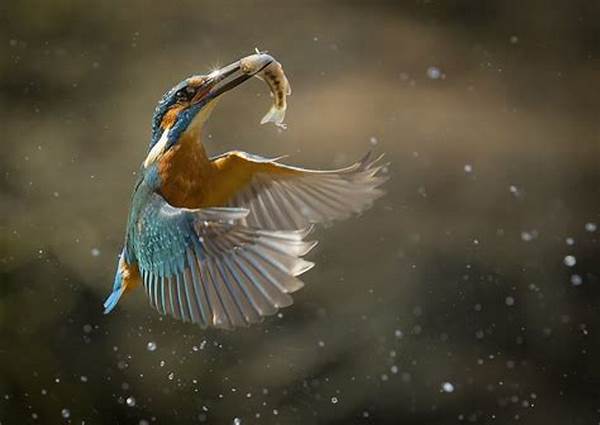Hey there, fellow photography buffs! Capturing fast-moving animals can be a thrilling yet challenging experience. Whether you’re snapping pics of your playful dog zooming around the yard or capturing the grace of a cheetah on a safari, learning how to freeze a magnificent split-second moment is an art in itself. With these tips for photographing fast-moving animals, you’ll be all set to bring action shots to life!
Read Now : Motion-filled Animal Photography Showcase
Mastering Your Camera Settings
When it comes to photographing fast-moving animals, mastering your camera settings is essential. Start with adjusting your shutter speed. Fast-moving creatures demand a swift shutter to freeze their action – think of it as quick as a blink! Try setting it to at least 1/1000th of a second or faster, depending on your subject’s speed. Also, adjust your ISO setting to ensure adequate light reaches the sensor without resulting in a noisy image. High ISO settings can assist during those low-light scenarios but be cautious about reducing image clarity. Finally, focus mode is another key aspect. Switch it to continuous or AI Servo mode to track moving subjects with ease, allowing for dynamic shots. These foundational tips for photographing fast-moving animals will offer you the right balance between speed, clarity, and artistic flair.
Gear Selection for Action Shots
Tracking Techniques for Success
Capturing that picture-perfect moment of your furry friend or wildlife in motion is all about honing your tracking techniques. When dealing with quick subjects, anticipation is critical. Get familiar with the animal’s behavior to predict its next move. Patience is your ally here; sometimes, it takes time for the animal to do something picture-worthy. Persistence pays off when picking spots with excellent visibility. These actions paired with your awareness will guide your lens to the right angle. Mastering these tracking strategies, along with the tips for photographing fast-moving animals, ensures fantastic frames every time.
Lighting Conditions and Adaptation
Being adaptable to various lighting conditions is another piece of the puzzle when diving into tips for photographing fast-moving animals. Here are ten ways to master it:
1. Golden Hour Shooting: Utilize the softer natural light during sunrise or sunset.
2. Avoid Harsh Midday Light: It creates sharp shadows and contrasts, posing challenges.
3. Cloud Coverage: Overcast skies can offer even lighting conditions.
4. Use Lens Hoods: Minimize lens flare in glaring light.
5. Reflectors: Bounce light onto subjects in shaded settings.
6. External Flash: Invest in one to fill shadows effectively.
Read Now : Photography Tools For Eye-catching Images
7. ND Filters: Manage exposure without reducing shutter speed.
8. Live View: Adjust your camera’s settings precisely under various lights.
9. Spot Metering: Focus on a light reading of a specific area to maintain correct exposure.
10. Post-processing: Enhance lighting details using editing software once shots are captured.
Post-Editing Magic
Once you’ve nailed down the shooting phase, post-editing becomes an integral part of the process. Software like Adobe Lightroom or Photoshop can be your best buddies here. Adjusting exposure, contrast, and sharpness can turn a decent-looking picture into a masterpiece. Don’t shy away from cropping your images, especially if the subject didn’t quite fit during the rush of capturing them. Plus, enhancing colors can give your photos a vibrant look that further highlights the energy of your shot. Overall, embracing these editing tips for photographing fast-moving animals will elevate your wildlife gallery to sparkling new heights.
Capture the Moment with Creative Flair
Alright, shutterbugs, let’s talk about unleashing your creativity. The most crucial part of photography is to have fun with it! Try experimenting with different angles, like shooting low to the ground for a unique perspective or including elements of the surrounding environment for a storytelling touch. When using techniques like panning, you can keep the subject in sharp focus while blurring the background, conveying a true sense of motion. Every frame tells a story, so don’t be afraid to get artsy. After all, tips for photographing fast-moving animals are about letting your style and story shine through!
Conclusion
All in all, capturing fast-moving creatures isn’t just about having the right equipment, but also mastering techniques and staying adaptable to unpredictable scenarios. Remember to blend technical skills with creativity and patience to transform each frame into a tale of nature’s wonders. Whether you’re a budding photographer or seasoned pro, the key to memorable shots is keeping a sense of enthusiasm and exploration alive. So pack your camera, head out, and enjoy the adventure, letting these tips for photographing fast-moving animals inspire your next great capture!



